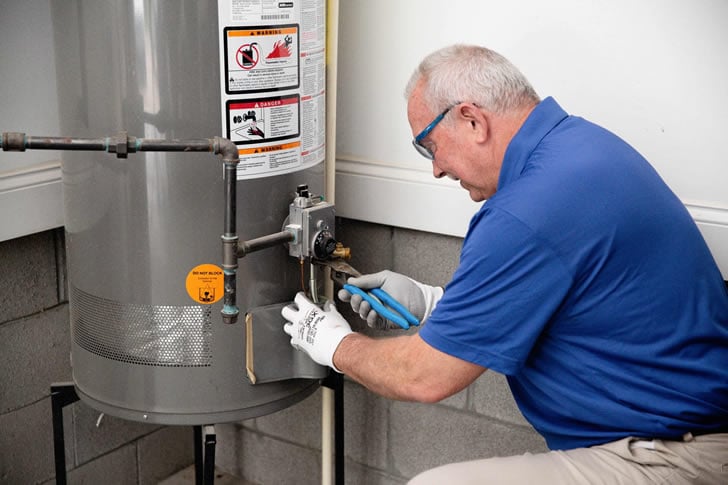Understanding Nbr 13531 in Depth
Nbr 13531 represents a classification or specification within technical standards. These standards guide industries in maintaining uniformity, ensuring safety, and enhancing system efficiency. Exploring how Nbr 13531 integrates into various sectors can shed light on its applications and significance in advancing industry-specific practices and innovations.

Unveiling Nbr 13531
In the realm of technical standards, Nbr 13531 emerges as a critical identifier, guiding industries toward achieving operational excellence. This classification is primarily utilized to streamline processes, enforce safety protocols, and ensure that systems operate within predefined parameters. But what exactly does Nbr 13531 encompass, and how does it influence industry standards? Let's delve into a deeper analysis.
A Closer Look at Technical Standards
Technical standards are essential frameworks that define specifications, protocols, and guidelines for processes and systems across various industries. Essentially, they provide a blueprint for both the expected outcomes and the methodologies that can be applied to achieve those outcomes. These standards play an integral role in enhancing operational efficiency, safety, and compatibility across different systems and sectors. Nbr 13531 is one such standard, instrumental in regulating specific industry practices.
Technical standards like Nbr 13531 gain significance as they offer a universal language, facilitating easier communication across various geographic and industrial boundaries. In today’s globalized economy, the need for standardization has never been more crucial. Adhering to such standards means adopting top practices that promote reliability and innovation at scale. They not only support compliance with local and international regulations but also encourage a collaborative approach to problem-solving within industries.
The Industry Impact of Nbr 13531
The influence of Nbr 13531 extends across multiple sectors, each benefiting uniquely from its guidelines. Industries such as manufacturing, engineering, and technology capitalize on these standards to refine their processes. By ensuring safety and quality, Nbr 13531 helps these sectors mitigate risks, thereby saving costs and enhancing product trustworthiness. Such risk mitigation is pivotal in preventing costly liabilities that can arise from accidents, non-compliance, or substandard practices.
Integrating standards like Nbr 13531 delivers a competitive edge, fostering innovation and setting the stage for technological advancements. By standardizing protocols, businesses can efficiently scale operations without the inefficiencies that come with varying practices. The ability to replicate successful processes enables organizations to expand their reach and engage in international collaborations and expansions far more smoothly. This also encourages the sharing of best practices among companies, which can lead to industry-wide improvements and innovations.
Table: Key Features of Nbr 13531
| Feature | Description |
|---|---|
| Uniformity | Ensures processes and outputs are consistent across different regions and facilities. |
| Compliance | Maintains adherence to safety and operational regulations, reducing legal risks. |
| Innovation Support | Facilitates integration of new technologies and processes. |
| Risk Management | Helps identify potential hazards and implement control measures effectively. |
| Efficiency Improvement | Reduces waste and increases productivity with streamlined processes. |
Implementing Nbr 13531: A Step-by-Step Guide
For businesses aiming to integrate Nbr 13531, it's crucial to follow a structured approach. Below, we outline key steps to ensure successful implementation:
- Assessment: Evaluate existing processes to pinpoint areas for standard integration. This may involve looking at current operational procedures, identifying gaps in compliance, and considering employee feedback on inefficiencies.
- Training: Educate the workforce on the specifications and requirements of Nbr 13531 to ensure smooth execution. It is important to not only train staff on the technical aspects but also on the benefits of adopting these standards for both the organization and their individual roles.
- Implementation: Gradually roll out new protocols, monitoring for compliance and efficacy. Consider piloting the changes in one department or area to assess impact before a full rollout.
- Review: Regularly assess the impact of the new standards and adjust strategies accordingly. Continuous improvement is vital; gather feedback and data throughout the implementation process to refine methods as needed.
FAQs about Nbr 13531
- What industries utilize Nbr 13531?
Nbr 13531 is widely used in manufacturing, engineering, and technology sectors, aiding these industries in upholding safety and quality standards that are essential for their operations. - How does Nbr 13531 enhance safety?
The standard outlines guidelines that ensure processes and outputs meet rigorous safety regulations, thus minimizing the risk of accidents and non-compliance issues. This proactive approach is vital in preserving worker safety and ensuring environmental sustainability. - Can Nbr 13531 evolve?
Yes, standards like Nbr 13531 can undergo periodic reviews and updates to incorporate advancements in technology and industry requirements. This adaptability helps ensure that the standards remain relevant and effective in a rapidly changing technological landscape.
The Role of Compliance in Nbr 13531
Compliance is a cornerstone feature of Nbr 13531. In an environment where regulations are constantly shifting, having a framework like Nbr 13531 ensures that organizations remain compliant with both local and international laws. This compliance not only helps organizations avoid legal repercussions but also builds trust with consumers who increasingly demand transparency in the products and services they use.
Organizations must also consider the implications of non-compliance, which can have far-reaching consequences. This may include financial penalties, loss of reputation, and increased scrutiny from regulators. By aligning with Nbr 13531, companies can demonstrate a commitment to quality and safety, which serves as a competitive advantage in the marketplace.
Challenges in Implementing Nbr 13531
While the benefits of implementing Nbr 13531 are clear, organizations may face several challenges during this process. Understanding these challenges is crucial for developing effective strategies:
- Resistance to Change: Employees may be resistant to changes in existing processes, especially if they perceive the new standards as an added burden. Overcoming this resistance often requires strong leadership and clear communication about the benefits of the new standards.
- Training and Resources: Proper training is necessary to ensure all employees understand and can adhere to Nbr 13531. This may entail significant upfront investments in resources, which some organizations may count as a barrier.
- Monitoring Compliance: Establishing a reliable system for monitoring adherence to Nbr 13531 may prove challenging, especially in larger organizations. Solutions may involve the implementation of technology to assist in tracking compliance.
- Continual Improvement: Standards such as Nbr 13531 are not static; continuous improvement is necessary to ensure that they are kept up to date with technological advancements and regulatory changes.
Future Trends Influencing Nbr 13531
As the landscape of global industries evolves, several trends are emerging that will influence Nbr 13531 and its implementation:
- Digital Transformation: The ongoing digital transformation across industries is likely to necessitate updates to Nbr 13531. As companies increasingly rely on data analytics, automation, and other technologies, the standards will need to incorporate these new practices and methodologies.
- Environmental Sustainability: There is a growing focus on sustainability and environmental impact in manufacturing and other sectors. Future versions of Nbr 13531 may place greater emphasis on sustainable practices and the reduction of carbon footprints.
- Globalization: With companies deriving a significant portion of their operations and sales from global markets, Nbr 13531 will need to adapt to embrace international standards and best practices more closely.
- Workforce Evolution: The needs and expectations of the workforce are shifting, with an increased focus on employee engagement and satisfaction. Future considerations for Nbr 13531 may therefore include the psychological and social aspects of compliance and operational standards.
Conclusion: Nbr 13531 in the Future Landscape
In summary, Nbr 13531 is an indispensable part of the industrial landscape, helping businesses maintain excellence and fostering an environment ripe for innovation. By offering structured guidelines, it enables organizations to improve their operations, ensuring they not only meet existing demands but are also prepared for future challenges. As industries continue to evolve, the importance of adherence to such standards will only grow, shaping the future of operational excellence.
To leverage the full potential of Nbr 13531, future-focused organizations will need to remain adaptable, recognizing the need for continuous improvement in both standards and practices. By embracing these principles, businesses can position themselves as leaders in their respective fields, ready to attract top talent, drive innovation, and achieve sustainable growth.
Ultimately, the journey toward adherence to Nbr 13531 is not a destination but an ongoing process. It requires a commitment from every level of the organization, from top management to the operational team on the ground. Integrated into the corporate culture, Nbr 13531 can lead to significant competitive advantages as organizations navigate the complexities of the modern business landscape.









